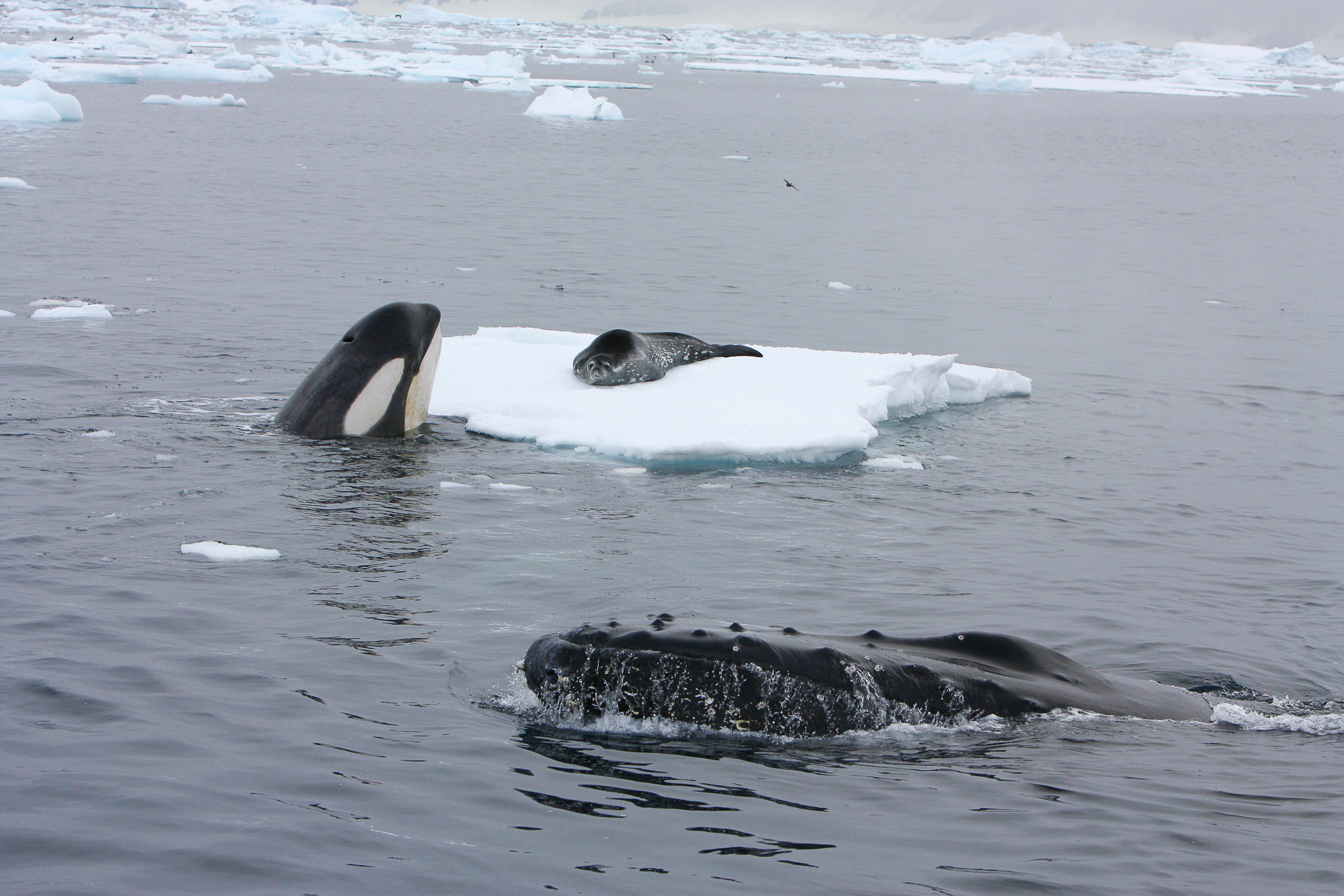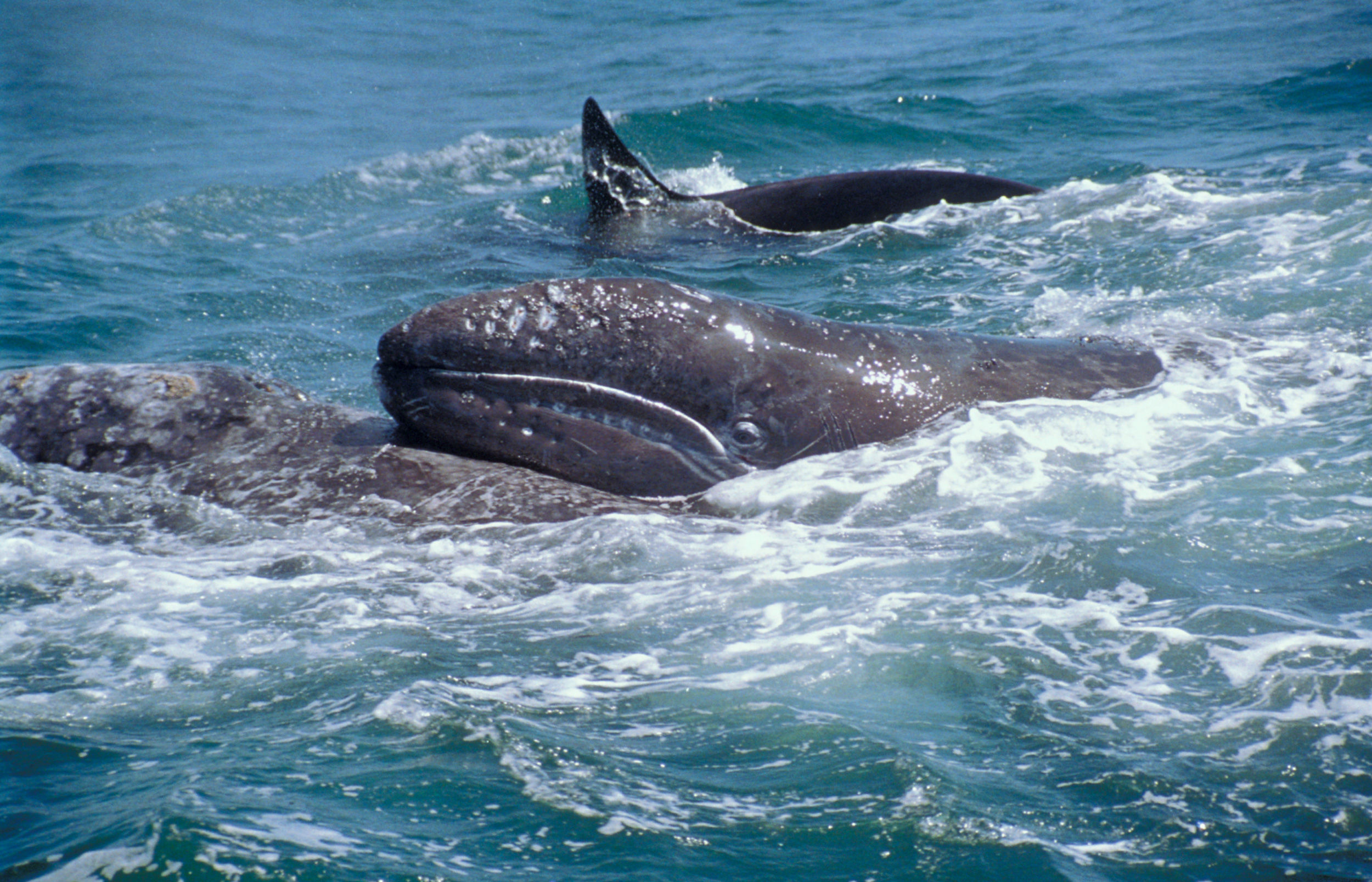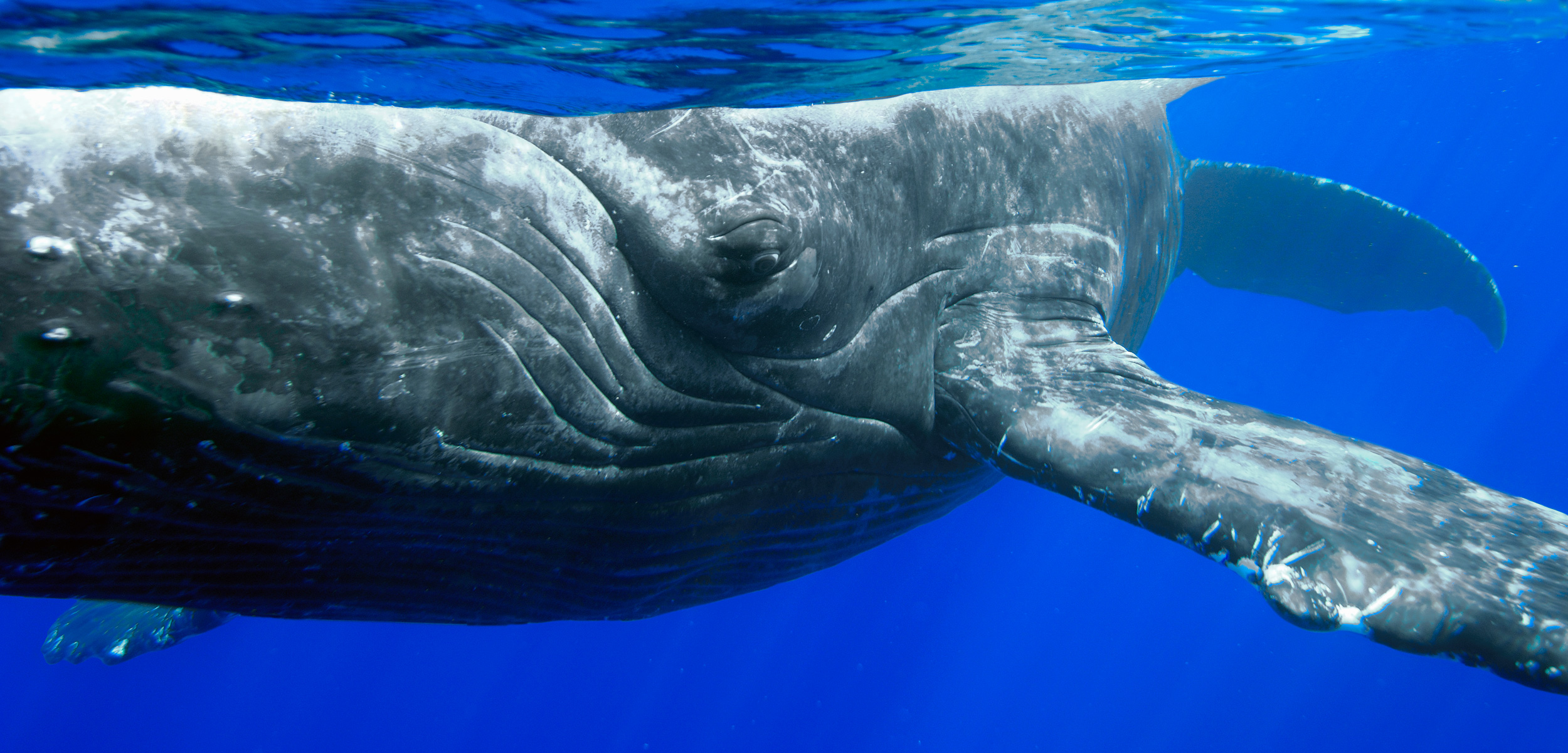The Power of Compassion
Why humpback whales rescue seals and why volunteering for beach cleanups improves your health.
Article body copy
When I was in university, a pub owner offered me a job as bouncer. He reasoned that folks would be less likely to get into a brawl with a friendly female than they would a large hairy bloke. Always a sucker for a social science experiment, I gamely took the job. One black eye and a wrenched shoulder later, I quit. What my boss and I hadn’t fully appreciated is that by the time a person needs to be removed from a bar, his or her capacity to discriminate who is doing the removing has vanished. When the urge to fight erupts, any target will do.
I shared this story with Fred Sharpe, a humpback whale researcher with the Alaska Whale Foundation, and he described the remarkable capacity humpback whales have to do just what those drunks could not—hone their aggression. “The bulls love to fight. It’s like Saturday night in the Octagon,” he says. “You’ll be in a whale watch boat and all these males will be thrashing on each other. They’re bloodied and so charged up, and the fact that they don’t redirect all that agitation towards the occupants of the boat is remarkable. With a lot of predators, if you got in the middle of that, it would be aimed at you in an instant. Humpbacks are these amazing Buddhist warriors.”
Ascribing Buddhist-like qualities to humpbacks seems particularly apt in light of recent revelations about how these large baleen whales use their superpowers for good. Humpbacks, it turns out, deliberately interfere with attacking killer whales to help others in distress. They don’t just defend their own babies or close relatives. They intervene on behalf of other species—a gray whale calf with its mother, a seal hauled out on an ice floe, even an ocean sunfish. Humpbacks act to improve the welfare of others; the classic definition of altruism.
First-person accounts of animals saving other animals are rare. Robert Pitman, a marine ecologist with the US National Oceanic and Atmospheric Administration, describes a pivotal encounter he witnessed in Antarctica in 2009. A group of killer whales washed a Weddell seal they were attacking off an ice floe. The seal swam frantically toward a pair of humpbacks that had inserted themselves into the action. One of the huge humpbacks rolled over on its back and the 180-kilogram seal was swept up onto its chest between the whale’s massive flippers. When the killer whales moved in closer, the humpback arched its chest, lifting the seal out of the water. And when the seal started slipping off, the humpback, according to Pitman, “gave the seal a gentle nudge with its flipper, back to the middle of its chest. Moments later, the seal scrambled off and swam to the safety of a nearby ice floe.”

A Weddell seal takes refuge from attacking killer whales on the chest of a humpback whale. Photo by Robert L. Pitman
“That incident convinced me on the spot,” says Pitman. “Those humpbacks were doing something that we couldn’t explain with what we knew at the time about humpbacks and killer whales.”
Pitman started asking people to send him similar accounts. Soon he was poring through observations of 115 encounters between humpbacks and killer whales, recorded over 62 years. “There are some pretty astonishing videos these days of humpbacks charging in on killer whales,” he says.
In a 2016 article in Marine Mammal Science, Pitman and his coauthors describe this behavior and confirm that such acts of do-gooding are widespread. They have been occurring for a long time and have been seen in locations all over the world. “Now that people know what to look for, especially people out on whale watch boats, they see it fairly regularly,” Pitman says. “So now, even for the people who didn’t believe, which initially included some of the coauthors on the paper, I think everybody now understands that this is going on.”
But knowing that something is happening and understanding why are two different things. Pitman and his coauthors openly ponder the meaning of these encounters. “Why,” they write, “would humpback whales deliberately interfere with attacking killer whales, spending time and energy on a potentially injurious activity, especially when the killer whales were attacking other humpbacks that may not be related, or even more perplexingly, as in the majority of cases reported, when they were attacking other species of prey?”
Mammal-eating killer whales attack young humpbacks, so it’s possible that humpbacks mob them as a generalized antipredator behavior, just as crows will mob a perched bald eagle. In 95 percent of the cases studied, the interactions were between humpbacks and mammal–eating killer whales. These include transient killer whales, also known as Bigg’s killer whales, that range along the west coast of North America hunting seals, sea lions, porpoises, dolphins, and the calves of larger whale species.

In Antarctica, a killer whale spyhops to check out a Weddell seal, while a humpback whale surfaces nearby. Photo by Kathryn Jeffs/Minden Pictures
It could also be that specific humpbacks, individuals that may have survived a killer whale attack when they were young or lost a calf to killer whale predation, respond to these traumas by going on the offensive. Sharpe concurs that the severity of a past interaction could affect an individual.
A full-grown 23- to 36-tonne humpback presents a formidable force against a killer whale. Each enormous flipper can measure half the length of a telephone pole. Razor-sharp barnacles encrust the knobby leading edge of these appendages, and the whales brandish them with great dexterity. Humpbacks are the only species of baleen whales to carry their own offensive and defensive weaponry. Though killer whales have teeth, and are smaller and more agile, a blow from the massive humpback tail or flipper could be fatal.
Killer whales recognize the danger. When confronted by a ferociously bellowing mob of adult humpbacks, killer whales will eventually flee. Humpbacks usually work in pairs to fend off killer whales, but lone humpbacks have been observed taking on 10 or more individuals. These battles can be hard won. Humpbacks sometimes spend hours mobbing killer whales, never stopping to rest and feed.
Intriguingly, humpbacks don’t just stumble upon killer whale attacks. They race toward them like firefighters into burning buildings. And like these brave rescue workers, humpbacks don’t know who is in danger until they get there. That’s because the sound that alerts them to an attack isn’t the plaintive voice of the victim. It’s the excited calls of the perpetrators.
Transient killer whales tend to be silent when they are hunting, but when they finally attack they get really noisy. Pitman believes humpbacks have one simple instruction: “When you hear killer whales attacking, go break it up.”
But humpbacks also display remarkable capacities for subtlety. Sharpe calls them “hypercultural beings,” pointing out how adaptable and good they are at learning from each other. “Their ability to pick up on social nuance in some ways far surpasses ours,” he says. When I ask if humpbacks are aware of the suffering of others—one of the defining characteristics of compassion—he shares a story of a humpback that died in Hawai‘i about a decade ago. “The whale was head down in the water no longer breathing. It attracted a lot of unusual interest from other humpbacks. You know how elephants fondle the bones and skulls of deceased individuals? Their response had that feel to it.”
Sharpe laments how difficult it is to test what’s going on in the minds of whales. “There is part of the human brain that is associated with prosocial behavior,” he explains. “But we are so limited because we can’t put EEGs or PET scans on free-ranging larger whales.”
So are humpbacks compassionate? Scientists, Sharpe tells me, shy away from using the same descriptors we use for humans. “What is exciting about humpbacks is that they are directing their behavior for the benefit of other species,” he says. “But there’s no doubt there are important differences between human compassion and animal compassion.” When I pose the same question to Pitman he concurs. “No editor is going to let me use the word compassion. When a human protects an imperiled individual of another species, we call it compassion. If a humpback whale does so, we call it instinct. But sometimes the distinction isn’t all that clear.”
Humpback whales cruise British Columbia’s central coast. Video by Grant Callegari
We now recognize cultural differences within whale, primate, elephant, and other species in ways that were unimaginable just decades ago. Studies of animal emotions proliferate, and with them come challenging questions about how to best interpret what looks like compassion and altruism in other species. Just how these acts differ from our own behaviors may be hard to pinpoint. In 2014, commuters in a crowded railway station in northern India, for example, watched a male rhesus macaque attempt to resuscitate an unconscious macaque that had been electrocuted while walking on high-tension wires. A video of the incident shows the rescuer nipping, massaging, shaking, and repeatedly plunging the victim into water. The life-saving effort lasts 20 minutes until the monkey miraculously revives.
In an attempt to decipher what qualities of compassion might be uniquely human, I binge-watch videos on Stanford University’s Center for Compassion and Altruism Research and Education website. I am captivated by a video showing a series of experiments in which a toddler voluntarily totters across a room to assist an apparently clumsy researcher who needs help. The same basic helpful behavior happens later in the video when the experiment is repeated with chimpanzees.
What’s powerful about these studies, according to Felix Warneken, head of Harvard University’s Social Cognitive Development Group and the researcher who led the study, is that they challenge the strongly held belief that we need to be taught to be altruistic through social norms. His findings indicate otherwise. Chimpanzees, as well as children too young to have learned the rules of politeness, spontaneously engage in helpful behaviors, even when they have to stop playing or overcome obstacles to do so. The same results have been duplicated with children in Canada, India, and Peru, as well as with chimpanzees at the Max Planck Institute for Evolutionary Anthropology in Germany and other research centers across the world. The chimps helped not only people they knew, but human strangers too.
Compassion, it turns out, is innate. Human beings and other animals have what Dacher Keltner, a professor of psychology at the University of California, Berkeley, calls a “compassionate instinct.”
Steve Cole, a professor of medicine and psychiatry and biobehavioral sciences in the University of California, Los Angeles School of Medicine reveals an intriguing insight into threat biology that might shed further light on why humpbacks willingly enter into dangerous altercations with killer whales. Cole explains that scientists used to think that the circuitry for detecting and responding physiologically to threatening circumstances was there to protect the survival of the individual. But that is no longer the case. Studies in threat neurobiology suggest that those circuits are there to defend the things individuals care about. “This is why you get parents and those firefighters running into burning buildings to save children and soldiers running into a hail of gunfire for the country they love,” says Cole. “These people are in adverse environments, but they are acting as if they are in good environments simply because they are attached to some kind of big purpose or cause greater than their own individual well-being or perhaps sometimes, even survival.”

A female gray whale lifts her calf out of the water to protect it from a hunting killer whale. Photo by Sue Flood/Minden Pictures
I wonder what humpback whales care deeply enough about to actively swim into battle with killer whales. When I pose this to Pitman, he tells me they are selfish. “They are getting something out of this.” He believes that the fact that they occasionally save a humpback calf is a strong enough motive for them to rush in to help, even if it means they end up saving sunfish and sea lions and dolphins and a gray whale calf every now and then. “It’s the net effect that is working for them,” he explains.
All altruism involves some benefit for the helper, Cole agrees. He says it’s biologically difficult to call anything “true altruism” because “helping others almost always doses us with some kind of dopaminergic reward. From the standpoint of empirical biology, the notion of altruism may be a misnomer, if not outright illogical.”
Indeed, the happiness we derive when we act on behalf of the greater good shows up in our cells as a better immune response profile, according to Cole. While we might feel just as happy eating ice cream as we do volunteering at a beach cleanup, at a cellular level happiness derived from meaningful service to others is correlated with positive health benefits. Better health through environmental action—that’s good news indeed for engaging people in marine conservation.
Sharpe says it’s important to step back and appreciate the wonder of the act itself. “It’s easy to get lost in the nuance and to come up with high standards of how you interpret this behavior,” he says. “But the fact is you have seals on the bellies of humpbacks. You know, it’s just a really cool phenomenon and that’s reason enough.”

